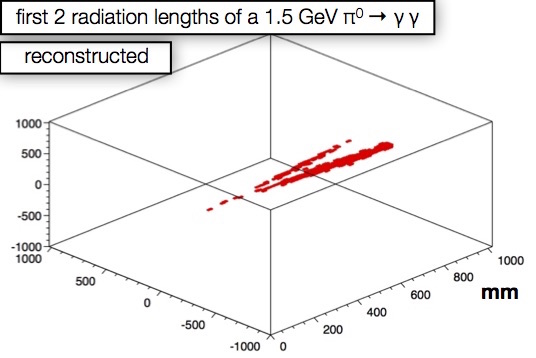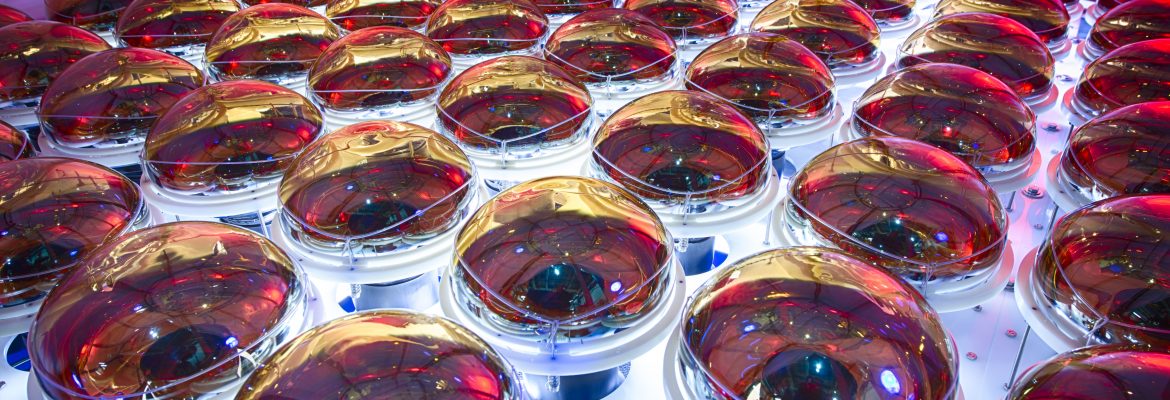
An example of two tracks emitted from the same point. This image was reconstructed by backward extrapolating the times of the photon hits on the wall of an ANNIE-like detector. Credit: Matthew Wetstein, Iowa State University.
Large Area Picosecond Photodetectors (LAPPDs) are a new kind of imaging photodetector designed to provide exquisite time resolution, roughly 50 picoseconds for a single photon. That’s the time it takes light to travel a mere 1.5 centimeters. LAPPD technology was developed through a multidisciplinary R&D project spearheaded by high-energy physicists and funded by the Department of Energy. Now in the commercialization phase, in a trail production line developed by Incom Inc., LAPPDs will serve a critical role in the ANNIE experiment.
Neutrino interactions in the ANNIE detector are observed by way of the charged particles they produce. Those charged particles are then detected by way of the light they emit through the Cherenkov effect. Taking the locations and times of each photon detected along the walls of the tank, it is possible to work backward to extrapolate the points and tracks from which they were emitted. The ANNIE physics analysis will require very strict tolerances on the details of the event. And this requires the sort of space and time resolution enabled by LAPPDs.
Photosensors such as LAPPDs could have broad applications in the field of physics. ANNIE will be a first opportunity to test them in a substantial experimental context, along with the novel PSEC4 readout electronics and a complete data acquisition system. Work is already under way to perform system tests of LAPPDs and integrate them with the rest of the detector.


